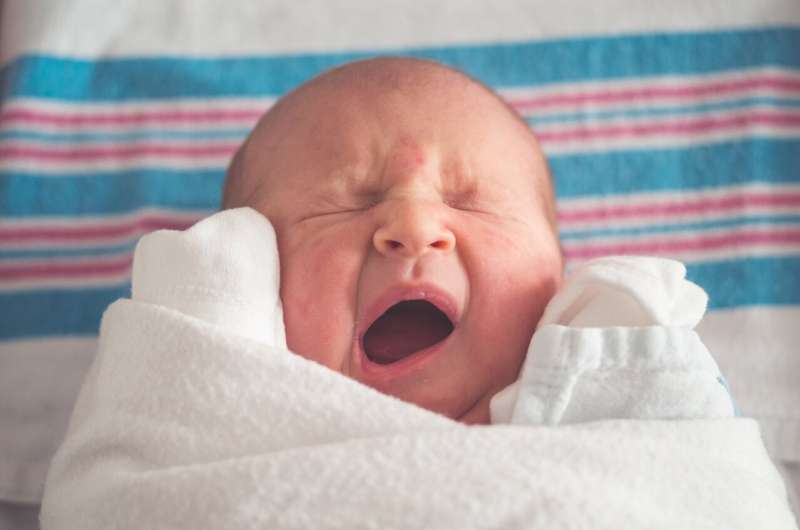Credit: Unsplash/CC0 Public Domain
A team of researchers from the University of Turin, New York University and University Hospital of Lausanne, has found that newborn babies have the ability to sense where their body ends and the rest of the world begins in ways similar to adults. In their paper published in Proceedings of the National Academy of Sciences, the group describes their study of newborn brains compared to adult brains using electroencephalography.
Prior research has found that the ability to sense the boundary between a person's body and the external world is necessary for survival. It also has been found to play a role in self-awareness and in directing bodily actions. In this new effort, the researchers sought to learn more about the timing of the development of such a sense arising in humans.
The work by the team involved 25 newborns (and their parents) and another 25 adults. Each received a small jolt of electricity to the back of the hand while a tone was also played, and while also undergoing electroencephalography. By measuring electrical activity in the brain during dual stimulation, the team was able to spot multisensory integration of concurrent events. The researchers also moved the tone source to change the distance between it and the volunteer. And they also ran the same experiment again, but giving the volunteers only one of the stimulants to serve as a comparison factor.
In looking at the brain electrical activity of both the newborns and the adults, the researchers found that neural response was greater in the brain when it was exposed to two stimulating events at the same time, compared to experiencing just one. They also found that for both infants and adults, a superadditive multisensory effect was more pronounced for tones that were closer to them than for those that were farther away. The researchers suggest that when all the data is put together, there appears to be strong evidence for suggesting that infants can sense their bodily boundaries as well as adults. This further suggests that such a sensing ability develops prior to birth.
More information: Irene Ronga et al. Spatial tuning of electrophysiological responses to multisensory stimuli reveals a primitive coding of the body boundaries in newborns, Proceedings of the National Academy of Sciences (2021). DOI: 10.1073/pnas.2024548118
Journal information: Proceedings of the National Academy of Sciences
© 2021 Science X Network
























